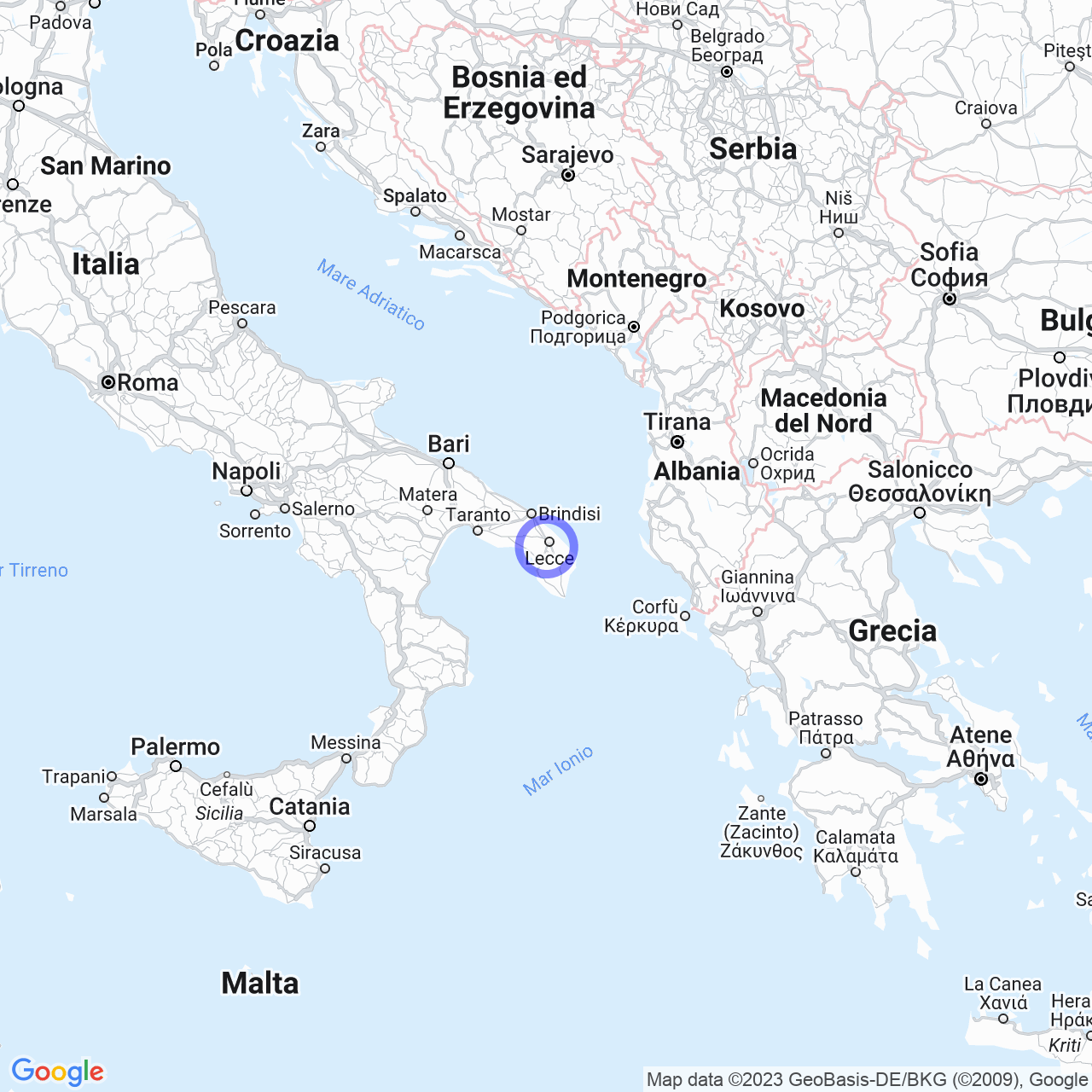San Pietro in Lama
Welcome to San Pietro in Lama, a gem in the heart of Salento!
San Pietro in Lama is a small town in Apulia, with about 3,500 inhabitants, located in the province of Lecce, in the central-northern part of Salento. Its morphology is mainly flat and the territory extends over an area of 7.93 km². In this article, we will take you on a journey to discover this village, telling you about its history, geography, and climate.
Physical geography
San Pietro in Lama is located in the Valley of Cupa, a vast natural depression around the city of Lecce. The town is crossed by the Salentina di Gallipoli National Road 101, which connects Lecce to Gallipoli and divides the village with the urban center of Lequile. San Pietro in Lama borders Monteroni di Lecce to the northwest, Lequile to the north, east, and south, and Copertino to the southwest. It is located in zone 4, with very low seismicity.
The climate of San Pietro in Lama is typically Mediterranean, with mild winters and hot-humid summers. The average temperature of the coldest month, January, is about 9°C, while that of the warmest month, August, hovers around 25°C. The average annual precipitation is about 676 mm, with a minimum in spring-summer and a peak in autumn-winter.

Etymology
The name of the town of San Pietro in Lama is linked to the legend that the Apostle St. Peter, on his way to Rome in 43 AD, to avoid the then pagan Lecce, passed through a swampy area called "lama" in the local dialect. In some ancient geographic maps, the village is also marked with the name "San Pietro de l'imbrici," due to the presence of craftsmen who worked with terracotta and clay to produce roof tiles. Until 1865, the municipality was officially called Lama.
History
San Pietro in Lama is situated on ancient pathways that connected Lecce to Copertino and Porto Cesareo, a city where remains of an ancient center from the Messapian and Roman eras are found, identified as the city of Rudiae, the homeland of the Latin poet Quintus Ennius. The history of the village of San Pietro in Lama is closely linked to the presence of ancient farmhouses and a flourishing agricultural tradition based on the cultivation of olives, figs, almonds, and other traditional crops of Salento.
During the Kingdom of Naples, San Pietro in Lama was a fiefdom belonging to the De Gennaro family. In 1806, the municipality was annexed to the district of Lecce, then became autonomous in 1811, and took the name San Pietro in Lama. From 1816 to 1865, it was officially called Lama.
Monuments
San Pietro in Lama is a small town, but it offers some interesting attractions for tourists. Among these, the Matrice San Pietro Apostolo Church, built around the 17th century in the Baroque style of Lecce, with a gabled façade and a portal in Lecce stone. Other noteworthy religious buildings are the Church of San Rocco and the Church of the Madonna delle Grazie.
Economy
San Pietro in Lama is primarily an agricultural municipality, based on the cultivation of olives, figs, almonds, and other traditional Salento crops. In the municipality's territory, there are also many historic farmhouses, some of which have been renovated and converted into agriturismo. Thanks to its excellent location, San Pietro in Lama is a strategic point for the production of high-quality wine and oil, which are exported worldwide.
Curiosity
San Pietro in Lama is a municipality that has preserved many ancient traditions related to agriculture and the culture of Salento. In particular, there is the tradition of "cuscinetta," a kind of focaccia made from pizza dough cooked on an oval stone, a symbol of Salento's culinary art.
Moreover, popular tradition tells of the presence of the "Devil of Tarantula," a legendary figure believed to have lived between the 16th and 18th centuries, who would have healed people affected by tarantula venom through the use of music and dance. Today, the tradition of the tarantula is revived every year during the famous Taranta Festival.
Conclusion
San Pietro in Lama is a small Apulian town that offers tourists an authentic view of Salento's culture and traditions. Its central location makes it an ideal stop for those who want to discover the beauty of Apulia, immersing themselves in the art, history, and popular traditions of a unique land in the world.
